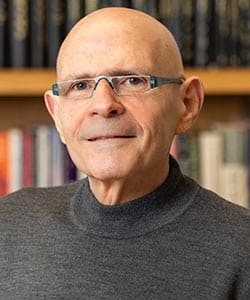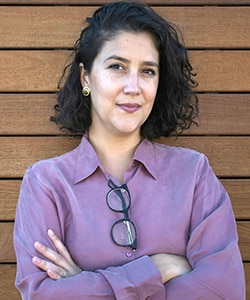German Scientists Develop A Novel Therapy To Reverse Paralysis
Scientists from Northwestern University have come up with a regenerative breakthrough with a novel injectable therapy that controls the so-called dancing molecules to repair tissue and reverse paralysis after severe injuries on the spinal cord.
A single injectable therapy was employed by the scientists for this cutting-edge research which targeted the tissues near the spinal cords of paralyzed mice. German scientists make these mice walk again 4 weeks after administering the drug.
The study findings will be published in the journal Science, Nov.12 issue. The research details of the new drug that reversed paralysis can be accessed online.
By triggering the cells with bioactive signals to regenerate and repair, the novel therapy remarkably helped in the recuperation of severely affected spinal cords in five major ways:
- Survival of many other motor neurons
- Formation of functional blood vessels in order to supply nutrients to the cells present at the site of injury
- Reformation of the insulating axon layer known as myelin, which is crucial for efficient transmittance of electrical signals
- Major decline in scar tissue that can form a physical barrier to repair and regeneration
- Regeneration of axon, the severed extensions of neurons
Following the therapeutical action, the materials get broken down into nutrients by 12 weeks and later disappear completely leaving no traces or noticeable side effects. This is one of the first-ever research conducted where German scientists make mice walk again by regulating the combined molecular motion with chemical structure alteration to improve the efficiency of the therapy.

The one who supervised the study at Northwestern University, Samuel I. Stupp stated that their study intends to develop a therapy that can help prevent paralyzation after severe disease or trauma. For several decades, this has been a major concern for researchers since the human CNS (Central Nervous System) including the spinal cord & brain doesn’t have any potential to repair on its own following the onset of a degenerative disease or after a major injury. He added that they are approaching the FDA (Food & Drug Administration) directly to initiate the approval process for the application of this breakthrough therapy in human volunteers, who now have no other or few treatment options.
Stupp is SQI’s (Simpson Querrey Institute for BioNanotechnology) & CRN’s (Center for Regenerative Nanomedicine) founding director as well as the Board of Trustees Professor of Biomedical Engineering, Medicine, Chemistry, Engineering, and Materials Science at Northwestern. He has collaboration with Feinberg School of Medicine, WCAS (Weinberg College of Arts and Sciences), and McCormick School of Engineering.
No Improvement In Life Expectancy Since The 1980s
Almost 300,000 individuals in the US are now suffering from spinal cord injuries, according to the NSCISC (National Spinal Cord Injury Statistical Center). Life can be extremely difficult for these people. Only a very small fraction (<3%) of individuals have recovered basic physical functions after complete spinal cord injuries. Moreover, 30% of these people were hospitalized again some time after their initial injury, with an average lifetime healthcare expense of million dollars per individual. Individuals with injured spinal cord have notably low life expectancy when compared to those who don’t have such injuries and the former group has not shown any improvement since the 1980s.
Harvard Scientists Unfolds The Secrets Of Regeneration With Glow-In-The-Dark Worms
Stupp, a professional in regenerative medicine mentioned that today there are no treatments for regenerating spinal cords. He further asserted that he aims to change the spinal cord injury outcomes and to address this issue, provided the considerable impact it could have on the patients’ lives. Additionally, this breakthrough paralysis therapy could save many in tackling spinal cord injury and could have an influence on therapies for stroke and neurodegenerative diseases.

‘Dancing molecules’ Hit Moving Targets
The truth behind Stupp’s new drug that reversed paralysis is the controlling of molecular motion, such that they can identify and correctly engage the cellular receptors which are constantly moving. The injection which is administered as a liquid instantly gels into a complex nanofiber network similar to the spinal cord’s extracellular matrix. By including receptor signals, mimicking the biomolecular motion, and matching the structure of the matrix, the synthetic materials are able to interact with the cells.
Stupp claimed that neuronal receptors as well as other cellular receptors move around constantly. The unique & novel aspect regarding their study of single injection therapy for paralysis is to tune the combined motion of over 100,000 molecules within the nanofibers. They were able to engage well with receptors by making these molecules leap, dance, or move temporarily from these structures called supramolecular polymers.
Stupp and his colleagues discovered that controlling the molecular motion within the network of nanofiber to increase their agility led to a significant therapeutic effect in paralyzed mice. German scientists successfully made mice walk again and they verified that their therapeutic formulations with boosted molecular agility showed better performance for human cell-based in vitro studies with enhanced cellular signaling and bioactivity.
Stupp stated that clearly, molecules with more agility would hit receptors frequently when the cellular receptors and cells themselves are constantly moving. If these molecules are less social and sluggish, they might never hit the cells.
Single Injection Breakthrough Paralysis Therapy Could Save Many With Two Signals
After connecting to the receptors, the molecules in motion activate two cascading signals, both of which are important for the repair of the spinal cord. One signal induces the spinal cord’s axons (long tails of neurons) to regenerate. Like electric cables, axons transmit signals between the rest of the body and the brain. Damaging or severing axons can lead to loss of body sensations or sometimes paralysis. On the other hand, repairing axons improves the interaction between the brain and body.
Novel Face Mask Designed To Address The Issues Of Disposable Masks
The second signal helps in the survival of neurons after the injury as it results in the proliferation of other cell types, which in turn promotes the lost blood vessels to regrow, an essential element for critical cells and neurons in repairing tissues. Additionally, the therapy lowers the physical hurdle that prevents healing of spinal cord- glial scarring and triggers myelin to restructure around axons.

The main author of the article concerning the new drug that reversed paralysis, Zaida Álvarez claimed that the signals employed in the research are similar to the natural proteins that are required to trigger the desired biological responses. Nonetheless, proteins are expensive to produce and have remarkably short half-lives. Their synthetic signals are modified & short peptides that- when combined together- have an extended period of survival up to a couple of weeks to deliver bioactivity. Finally, there is a single injection therapy for paralysis that has long-term effects and is cheap to produce.
Álvarez, who is a former research assistant professor at the Stupp’s Lab, is currently a scientist at Spain’s IBEC (Institute for Bioengineering of Catalona) and a visiting scholar at SQI.
Global Applications Of The Novel Therapy To Reverse Paralysis
As the novel therapy could be employed to prevent paralysis following a severe trauma like gunshot wounds, sports accidents, falls, automobile accidents, and even major diseases, Stupp claims that supramolecular motion, the underlying discovery, is the main factor in bioactivity which can be used for other targets and therapies.
Stupp explained that the CNS tissues regenerated in the spinal cord injury mimic those in the brain affected by neurodegenerative diseases like Alzheimer’s disease, Parkinson’s disease & ALS as well as stroke. Apart from that, their basic discovery about tuning the molecular motion to improve cell signaling could be used all over the world across biomedical targets and this breakthrough paralysis therapy could save many lives.
Keywords: The Novel Therapy To Reverse Paralysis, German Scientists Make Mice Walk Again, New Drug Reversed Paralysis, Injectable Therapy In Paralyzed Mice, Breakthrough Paralysis Therapy Could Save Many, Single Injection Therapy For Paralysis
Check Uut The Latest Science & Technology News At Biotecnika



